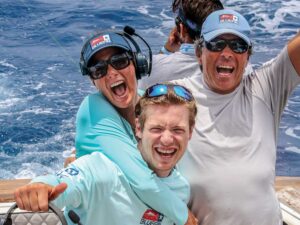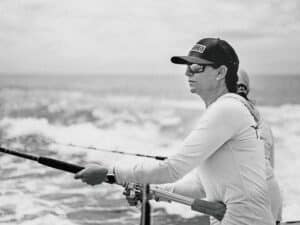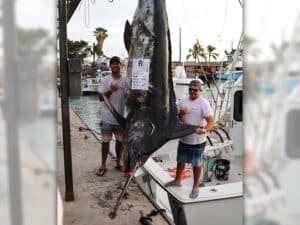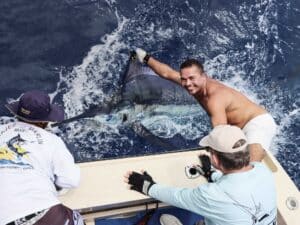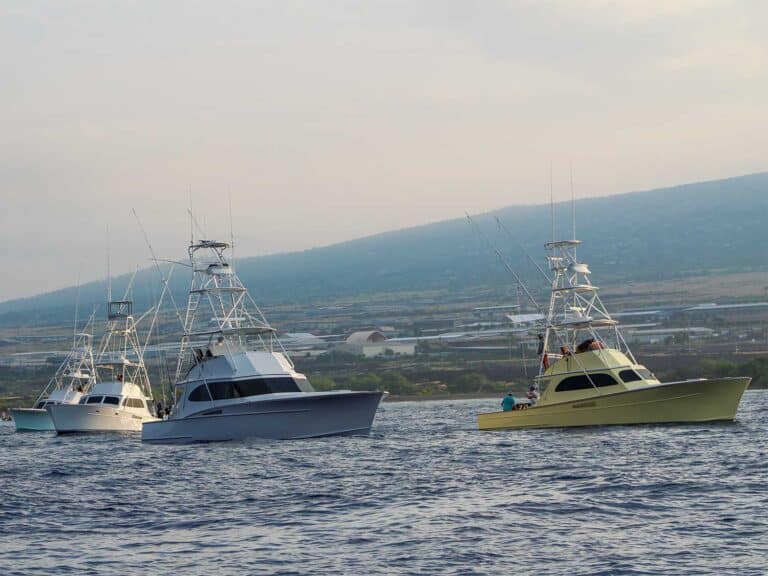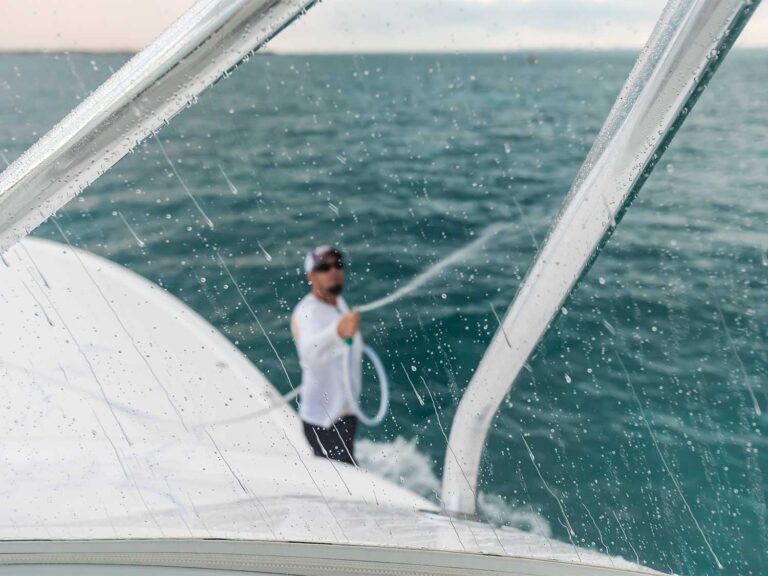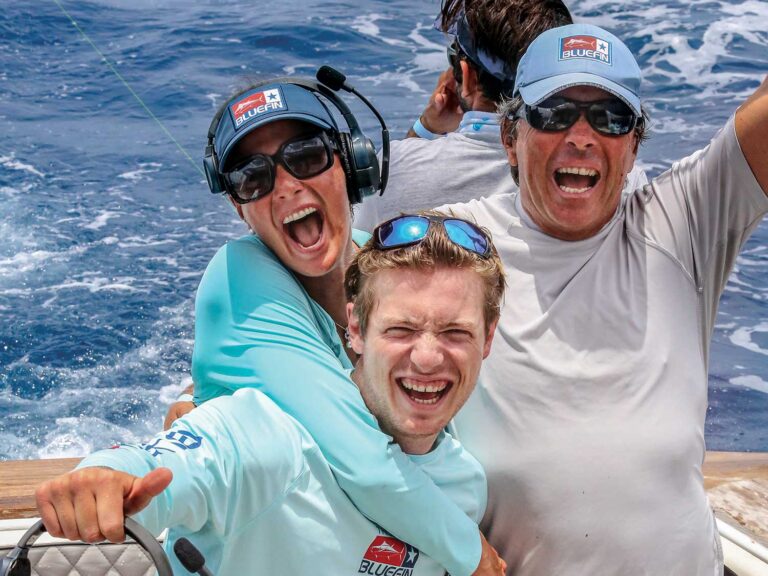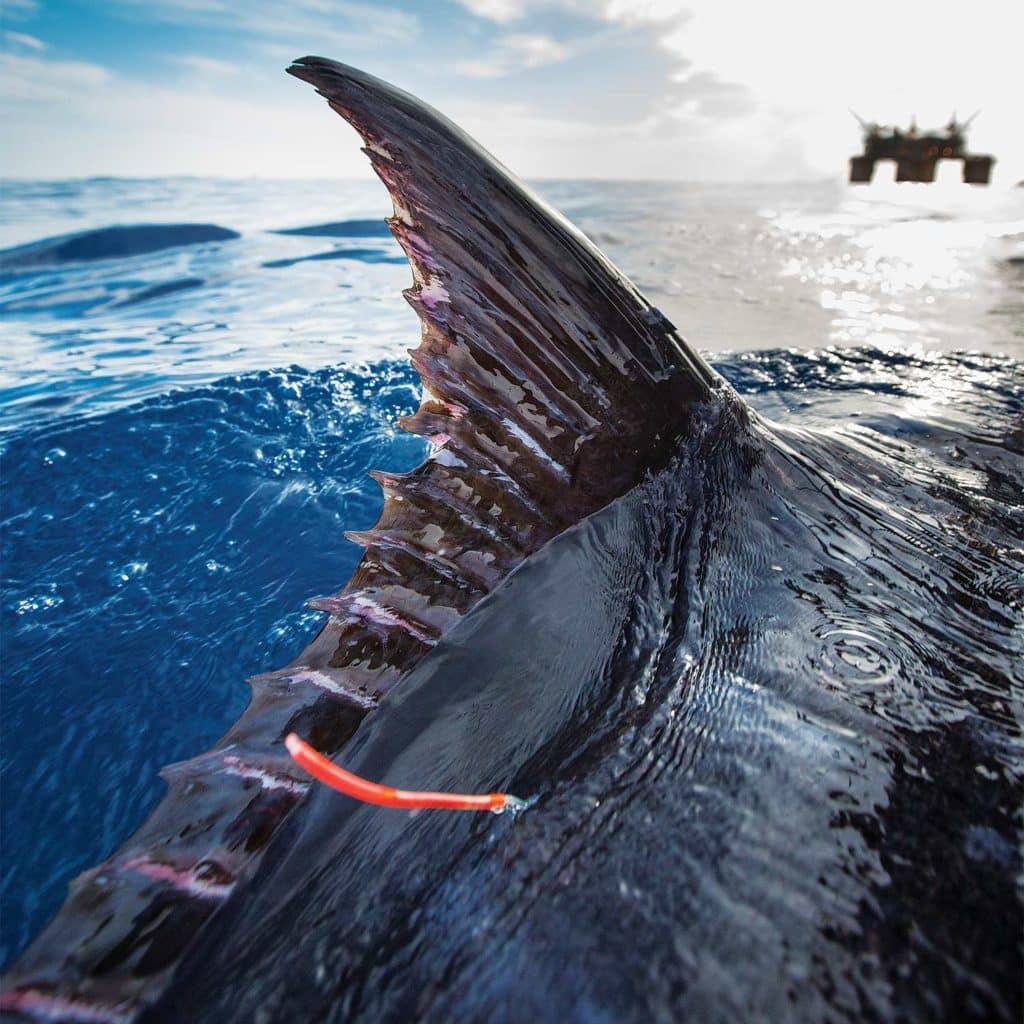
The Billfish Foundation, a 34-year-old nonprofit organization headquartered in Fort Lauderdale, Florida, was created in 1986 by anglers Winthrop P. Rockefeller, Don Tyson and Tim Choate, scientist Eric Prince, Ph.D., and other anglers concerned about the status of billfish. TBF is the only sport-fishing conservation organization whose 15-member board of directors and staff focuses primarily on billfish, plus some attention to swordfish and affiliated tunas, among which commercial fisheries billfish-bycatch mortality is the highest.
TBF fights to benefit sport fishing through three program areas—research, advocacy and youth education—in which anglers, captains and mates are engaged to help through data collection as well as strengthening anglers’ voices with advocacy initiatives and inspiring young anglers to develop their own passion for billfish and ocean conservation. Financial support comes from memberships, businesses, family foundations, individuals, clubs, tournaments with billfish categories, and TBF board members, all giving back for billfish resources upon which many depend. This symbiotic relationship produces successes that best ensure continued good fishing opportunities and healthy billfish stocks, which support a strong recreational fishing and boating economy.
Each year, TBF recognizes outstanding member actions during its annual gala, with presentations of lifetime-achievement awards for science, industry, individuals and outstanding clubs during the Fort Lauderdale International Boat Show. In February, during the Miami International Boat Show, TBF presents awards to top tag-and-release and catch-and-release captains, anglers and mates associated with each billfish species in each major ocean in the world. Awards are also presented to excelling youth anglers in five age groups, plus regional awards for the Gulf of Mexico, Cape Verde, Hawaii and South Florida, as well as a top female angler award.
TBF’s three program priorities of research, education and advocacy remain the cornerstones of the organization, but annual priorities are occasionally swayed by government initiatives, board-member input and funding availability, or lack thereof. During 2019, advocacy and research were top priorities and are anticipated to remain as such during 2020.
Just a few of the many important 2019 accomplishments achieved with the help of TBF members include the following: The foundation successfully fought counterproductive US federal fish-policy initiatives that threatened species conservation, recreational fishing and economics in the Pacific Ocean, Atlantic Ocean and Gulf of Mexico. In the Pacific, the government considered authorizing a shallow-set longline fishery for swordfish off California’s coast; in the Atlantic and Gulf, proposals were advanced to authorize measures for reinvigorating the pelagic longline swordfish fishery. Neither issue was approved, but the latter was subsequently restructured by the National Marine Fisheries Service and is again a hot topic this year, for which constituent engagement is needed.
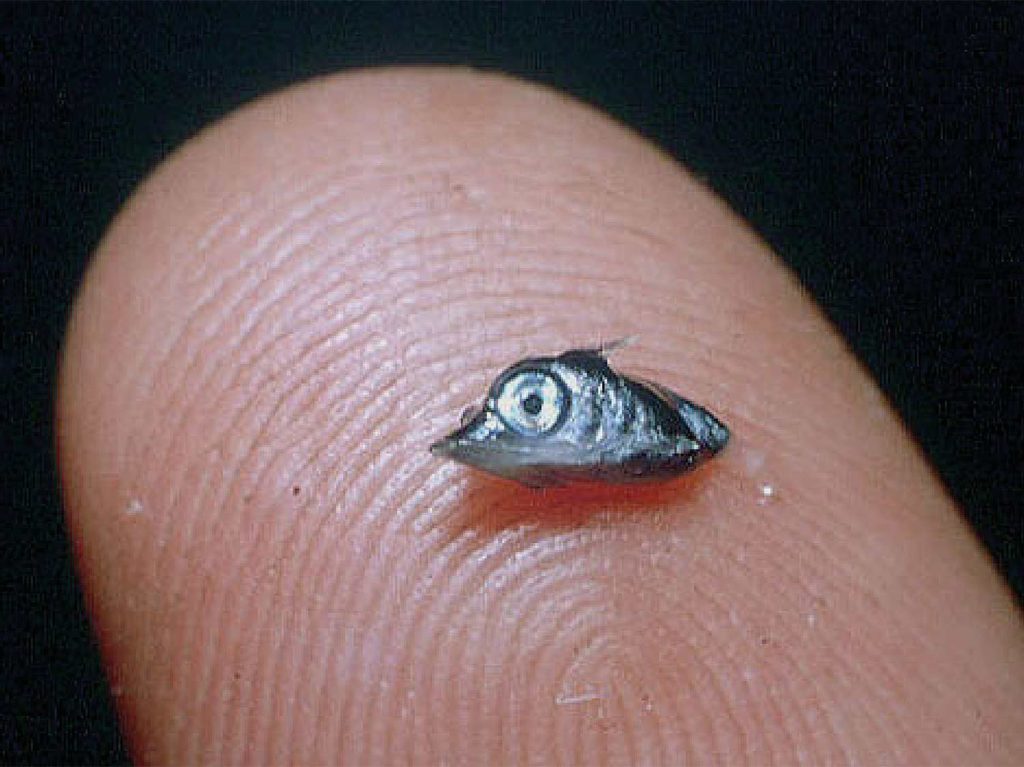
The organization sparked international fishery-management attention with a TBF letter pointing out failures by nations to report data for recreationally landed billfish, which constitutes illegal, unreported and unregulated landings, in violation of an important measure agreed to by the international regional management commissions. The letter applied pressure to report billfish landing data from recreational, artisanal and commercial fisheries; only when all nations report all billfish landing data can conservation and responsible management be fairly managed.
We deployed satellite tags on Atlantic blue marlin in the Gulf of Mexico, with help from constituents, for the purpose of collecting horizontal and vertical movement data, so better insight can be gained on whether some marlin remain in the Gulf’s warm waters around oil rigs, where abundant prey species are found year-round. If so, do the rigs influence or alter natural behavior, which could potentially contribute to evolutionary adaptations that impact stock status, habitat use, fishing and related economies? Once this tag data is received and analyzed, the results will be shared with the scientific and fishing communities. It should be very interesting.
Watch: Learn to make a bonito strip teaser here.
TBF also completed a comprehensive Atlantic blue marlin age and growth study, which helped advance aging techniques needed to improve the efficiency of estimating stock abundance for improved management and conservation decisions.
We continued development of a swordfish distribution model, which is a sophisticated mathematical computer program that will, based on a variety of data, provide scientists insights into where swordfish are located at different times throughout a year. Locations usually are associated with a fish’s critical life stages, including pre-spawning, spawning, juvenile nursery areas, etc. Additional research can then follow into each of the identified life-stage areas.
TBF announced the availability of a scholarship for a student pursuing doctorate-level billfish research, and we hosted an awesome sport-fishing gala that raised funds for advancing TBF’s research, youth marine education and advocacy.

The Importance of Membership
To US government entities, membership in groups like TBF represents an approximation of the importance that sport fishing and boating have with the public. If constituent support appears less than strong, less pressure is exerted on lawmakers and management-agency staff, weakening the collective billfish voices.
Read Next: When (if ever) is it acceptable to kill a marlin? Five pros sound off.
Internationally, marlin and sailfish stocks remain a low priority with most governments, so it is important that TBF ensures billfish issues are included on negotiating agendas of the international regional management commissions for highly migratory fish. Negotiating governments focus little on billfish and the sport-fishing industry, even though sport fishing generates tremendous economic returns to many nations through ecotourism. The economic importance of sport fishing is grasped by ministers of tourism, but unfortunately it is generally ignored by the fishery ministers, who view fish merely as commodities for the consumer markets. A meshing of these priorities could improve and make more-equitable billfish management and conservation while generating greater economic returns and better conservation. Only recently have US delegation leaders expressed interest in TBF identifying other nations that benefit from sport fishing, which was provided.
Just as we have done for more than three decades, TBF will continue to fight for sport-fishing conservation around the world.
